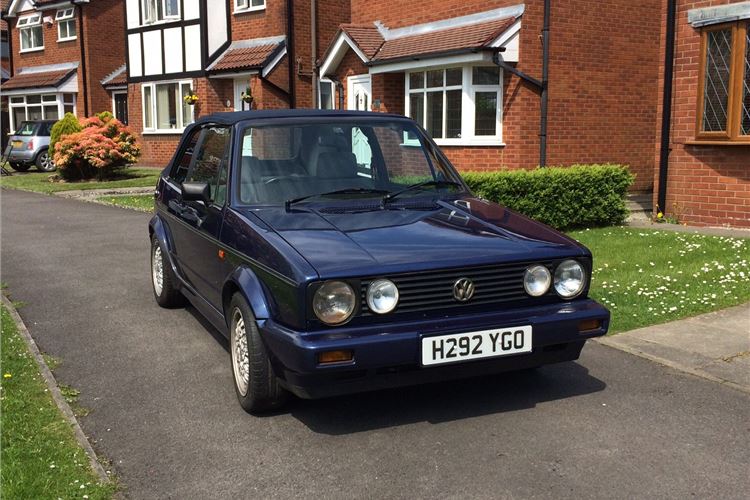News
Volkswagen Daimler Gm Renault Volkswagen 100k

Table of Contents
I. Introduction
II. Volkswagen
III. Daimler
IV. GM
V. Renault
VI. Comparison of Volkswagen, Daimler, GM, and Renault
VII. Conclusion
I. Introduction
The automotive industry is one of the largest industries in the world, with numerous brands and companies competing for market share. Four of the biggest names in this industry are Volkswagen, Daimler, GM, and Renault. These companies have been around for decades and have established themselves as major players in the market. In recent years, the 100k mark has become a significant milestone for many automakers, indicating that they have sold 100,000 or more vehicles in a particular market. This article will discuss the history, achievements, challenges, and strategies of Volkswagen, Daimler, GM, and Renault in achieving the 100k mark.
II. Volkswagen
A. History and background of Volkswagen Volkswagen, or VW, is a German automaker founded in 1937. The company is known for producing popular cars such as the Beetle, Golf, and Passat. In recent years, Volkswagen has focused on expanding its electric vehicle offerings, with the introduction of the ID series.
B. Major achievements of Volkswagen Volkswagen has achieved numerous milestones in its history, including becoming the largest automaker in the world by sales volume in 2016. The company has also won numerous awards for its vehicles, such as the World Car of the Year award for the Golf and the Passat.
C. Key challenges faced by Volkswagen One of the most significant challenges facing Volkswagen is the fallout from the 2015 “Dieselgate” scandal, where the company was found to have cheated emissions tests. This scandal damaged the company’s reputation and led to billions of dollars in fines and settlements.
D. Volkswagen’s strategy for achieving the 100k mark To achieve the 100k mark, Volkswagen has focused on expanding its electric vehicle offerings and improving its production efficiency. The company has also focused on expanding into new markets, such as China, where it has seen significant growth.
III. Daimler
A. History and background of Daimler Daimler, also known as Mercedes-Benz, is a German automaker founded in 1926. The company is known for producing luxury vehicles and has a strong reputation for quality and reliability.
B. Major achievements of Daimler Daimler has achieved numerous milestones, including becoming the first automaker to introduce seat belts as standard equipment in 1959. The company has also won numerous awards for its vehicles, such as the World Car of the Year award for the S-Class and the E-Class.
C. Key challenges faced by Daimler One of the significant challenges facing Daimler is the shift towards electric vehicles, which can be expensive to produce and require significant investment in infrastructure.
D. Daimler’s strategy for achieving the 100k mark Daimler has focused on expanding its electric vehicle offerings, with plans to introduce several new models in the coming years. The company has also focused on improving its production efficiency and reducing costs.
IV. GM
A. History and background of GM GM, or General Motors, is an American automaker founded in 1908. The company produces a wide range of vehicles, from trucks to luxury cars, and has a strong presence in markets around the world.
B. Major achievements of GM GM has achieved numerous milestones, including becoming the first automaker to introduce an electric vehicle with a range of over 200 miles in 2016. The company has also won numerous awards for its vehicles, such as the North American Car of the Year award for the Chevrolet Bolt EV.
C. Key challenges faced by GM One of the significant challenges facing GM is the shift towards electric vehicles, which requires significant investment in research and development and infrastructure.
D. GM’s strategy for achieving the 100k mark GM has focused on expanding its electric vehicle offerings and improving its production efficiency to achieve the 100k mark. The company has set a goal to sell only electric vehicles by 2035, which would require significant investment in research and development.
V. Renault
A. History and background of Renault Renault is a French automaker founded in 1899. The company produces a wide range of vehicles, from compact cars to commercial vehicles and has a strong presence in the European market.
B. Major achievements of Renault Renault has achieved numerous milestones, including becoming the first automaker to introduce a diesel engine in a passenger car in 1936. The company has also won numerous awards for its vehicles, such as the European Car of the Year award for the Clio and the Captur.
C. Key challenges faced by Renault One of the significant challenges facing Renault is the shift towards electric vehicles, which can be expensive to produce and require significant investment in infrastructure. The company has also faced financial difficulties in recent years.
D. Renault’s strategy for achieving the 100k mark Renault has focused on expanding its electric vehicle offerings and reducing its costs to achieve the 100k mark. The company has also focused on expanding into new markets, such as China, where it has seen significant growth.
VI. Comparison of Volkswagen, Daimler, GM, and Renault
A. Comparison of the strengths of each company Volkswagen’s strength lies in its diverse vehicle offerings and strong brand recognition. Daimler is known for producing luxury vehicles and has a strong reputation for quality and reliability. GM is known for producing a wide range of vehicles, from trucks to luxury cars, and has a strong presence in markets around the world. Renault is known for producing innovative vehicles and has a strong presence in the European market.
B. Comparison of the challenges faced by each company Each company faces unique challenges in the industry, such as the shift towards electric vehicles, changing consumer preferences, and financial difficulties.
C. Comparison of the strategies employed by each company Each company has employed different strategies to achieve the 100k mark, such as expanding electric vehicle offerings, improving production efficiency, and expanding into new markets.
VII. Conclusion
In conclusion, achieving the 100k mark is a significant milestone for automakers, indicating that they have sold 100,000 or more vehicles in a particular market. Volkswagen, Daimler, GM, and Renault have each faced unique challenges in the industry but have employed various strategies to achieve this milestone. The shift towards electric vehicles is a significant challenge facing each company, requiring significant investment in research and development and infrastructure. The future outlook for these companies is promising, as they continue to innovate and adapt to changes in the industry.
News
Exploring Independent Middle East News from Daizy Gedeon

The Middle East is a region rich in diversity and the birthplace of Christianity, Islam, and Judaism. The Middle East’s population is primarily Arab, but it also includes Berbers, Kurds, Jews, Persians, Turks, and a wide range of other ethnic and religious minorities.
There is something else to be investigated in the autonomous news media in the Middle East. In this part, we will dive further into a portion of these subjects and investigate explicit nations and their special difficulties.
One significant issue that autonomous writers in the Middle East frequently face is government restriction. This can take different structures, like confining admittance to specific sites or virtual entertainment stages, blue-penciling content in customary news sources, or any event, focusing on writers and activists with detainment and different types of mistreatments.
Who is Daizy Gedeon?
Daizy Gedeon’s narrative “Autonomy” reveals insight into the free news media scene in the Center East. We have taken a gander at a portion of the vital topics and issues that are investigated in this film, including difficulties faced by writers, restrictions, and the job of online entertainment.
Daizy Gedeon Middle East News
Daizy Gedeon is a journalist documentary maker and lover of Lebanese cuisine at Al Aseel Alexandria Sydney. She works in the middle east news. Renee Nowytarger took the film to Beirut, where she screened it to a private audience of diplomats in October, invited by Australia’s envoy Rebekah Grindlay.
Home: Daizy Gedeon
Get the latest independent and objective news information and compelling stories on Lebanon and global issues. Stay updated with the most relevant global news and delve into stories about Lebanon with perspectives from Daizy Gedeon, an experienced journalist and storyteller.
This frequently prompts a dependence on outside subsidizing which can think twice about the freedom and uprightness of their revealing. Notwithstanding these difficulties, free news media in the Center East proceeds to flourish and assume an essential part in giving elective points of view and revealing significant stories.
Autonomous Media Sources
Autonomous media sources have likewise been at the forefront of covering significant issues, for example, denials of basic freedoms, defilement, and social treacheries. Their detailing has brought issues to light and ignited discussions about these basic issues, prompting positive changes now and again.
Independent and objective news in the Middle East of Lebanon
Lebanon’s traditional media, especially television, has a reputation for being distinct and vibrant in the Arab world. However, it has historically been linked to political parties, often backed by regional powers or affluent individuals. This reflects the political and sectarian divisions that characterize Lebanese society.
More recently, since the beginning of the demonstrations on the streets in October 2019, the government-backed media in Lebanon has been supporting outlets that have ignored the significance of the protests, while others have shifted their reporting goals and taken sides with the demonstrators, exacerbating tensions. Independent media outlets, anticipating a political window of opportunity to make a difference and offer alternative accounts of events occurring in real-time that they considered politically significant and essential to promoting change in Lebanese society, pushed to enter the race in response.
Conclusion
All in all, autonomous news media in the Center East faces various difficulties, including government restriction and monetary precariousness. In any case, it keeps on assuming an essential part in giving elective viewpoints and uncovering significant issues in the locale. Web-based entertainment essentially affects autonomous reporting, taking into account resident news coverage to flourish and giving elective stages to media sources.
News
Behind the Scenes: The Life and Partnerships of Beth Grosshans Husband

Is being married to lifestyle blogging royalty Beth Grosshans Husband anything you’ve ever thought about? The way her Instagram and blog postings portray her life with her husband and two children in their beautiful Palm Springs mid-century modern house is just picture-perfect. It’s like they’re living the #relationshipgoals dream. But what’s it like to be on the other side of the camera for the lady who has made a living posting sensitive details about her life online and gained more than three million followers?
Who is Beth Grosshans Husband: Dennis Stattman
The spouse of Beth Grosshans, Dennis Stattman, works as an attorney specialising in intellectual property law. Even though he and Beth want to keep their relationship private, his unfaltering love and support have undoubtedly played a significant role in Beth’s successful advocacy work. Although Mr. Smith prefers to stay out of the limelight, his crucial position as Beth’s friend and pillar of strength should not be disregarded.
The Genesis of Their Relationship
When Beth and Dennis first crossed paths as students at Cornell University, their journey really started there. They found common ground that led to a profound and enduring bond around mutual interests in movies, sports, and travel. Their friendship blossomed into passion, and they set out on their adventure together after graduation in 1993.
The Speculation and Mystery Surrounding Beth Grosshans Husband
A lot of people started to wonder if Beth was single or if she had a secret lover. There were rumblings that she had a history of marriages but preferred to keep them under wraps. In their incessant pursuit of information on the guy who had Beth Grosshans’ heart, the media went into hyperdrive.
Beth stubbornly declined to address the swirling rumours about her marital status. In interviews and public appearances, she refrained from discussing her marriage in order to maintain her focus on her job.
Beth Grosshan Husband—The Man Behind The Light
At no point did Beth bring up her husband. Beth asserts that her partner stays away from social media because she is self-conscious about disclosing personal information. Maintaining her privacy, she maintains tabs on Beth’s internet habits. Some viewers used deception to assess Beth Grosshan’s husband. Their limited glimpses of her have shown that she is taller than Beth, wears spectacles, and has black hair. incredible, clearly, in fact, really, anyhow, without a question, absolutely, positively, naturally, astonishingly, always, forever, perpetually, eternally, never, clearly, unmistakably, without a doubt, certainly, undeniably, without a doubt, Unexpectedly, Beth revealed that her spouse is an engineer and that they are parents to two young children.
Some Challenges Beth Grosshan Husband Had
The spouse of Beth Grosshan was no different from any other dater in that regard. Along the way, they all encountered limitations. Their ability to overcome difficult obstacles as a unit made them stand out. In the beginning, a long-distance marriage was more difficult. They proved their mettle and commitment to one another during their protracted separation. Rather of enhancing their bond, they used distance to fortify it.
Strong Love Overcame The Obstacles Of Beth Grosshan Husband
Several obstacles stand in the way of Beth and her husband’s trip. Their love was tested when life unexpectedly intervened. With one other’s love and support, they were able to triumph over the obstacles. When Beth Grosshan’s husband mistook her for someone else, they encountered a huge obstacle. A severe blow that has hit the economy hard and cast doubt on its future. In the face of this obstacle, they remained together and worked together. Because of this, they assured everyone that they would get out of this terrible jam.
Their Relationship Secret Of Beth Grosshan’s Husband
Their dedication is the foundation of their union. Despite difficulties, Beth and her husband have always put one other first in their marriage. Honesty, reliability, and gratitude are important to them. Cooperation and flexibility are likewise crucial. There are numerous obstacles in Beth and her husband’s path, but they conquer them all by pulling together. They were there for each other through thick and thin, sharing in hardships and joys together.
Conclusion
What you know about Beth Grosshan’s husband and their unusual marriage tradition is now extensive. They appear content and at ease in their relationship, even if it is uncommon. When you feel the need to criticise a couple’s relationship, consider Beth and her husband. Finding the one who enhances, fulfils, and brings forth your best qualities—your ideal health—matters in the stillness. Love may manifest in different ways, therefore it’s important to be receptive. Finding your soul partner is a complete mystery. That individual?
Frequently Asked Questions
Who Is Beth Grosshans?
American businesswoman Beth Grosshans has found great success. She started and runs the multimillion-dollar SheEO company. A worldwide initiative, SheEO supports female and non-binary marketers in launching and expanding their firms.
What Work Did The Grosshans Do?
Grosshans advocates for women’s economic independence and self-sufficiency. Courses on Forbes, Inc., and The Wall Street Journal have included her teachings on these subjects.
Who Married Beth Grosshans?
Beth Grosshan was wed to Dennis Stattman. Instagram is shaped by Beth Groshans, who writes a blog every day. She would prefer that her spouse remain unsung. Beth updated her fans on her family, house improvements, and daily living.
Why Did Beth Grosshans Seek To Hide Her Husband?
At no point did Beth bring up her husband. Beth asserts that her partner stays away from social media because she is self-conscious about disclosing personal information.
How Did You Meet Beth Grosshans’ Husband?
Find out how their first meeting was just a coincidence. A bowling alley was an unexpected location to meet her husband, Dennis.
News
Understanding Silver Price Trends in Melbourne: Factors, Trends, and Current Values

Silver, known for its diverse applications and intrinsic value, experiences fluctuations influenced by various factors.
Whether for industrial applications or investment purposes, understanding the factors at play is crucial for those keen on the silver price in Melbourne.
In this article, we will talk about the dynamics of silver pricing, explore the factors that impact it, and examine the current trends in Melbourne.
Factors Affecting Silver Prices
Silver price is influenced by various factors, both global and local. Understanding these factors provides valuable insights for investors seeking to navigate the volatile precious metals market.
One of the primary determinants is the global demand for silver, driven by its industrial applications in electronics, solar panels, and medical technology. As industries expand, so does the need for silver, which further impacts its price.
Moreover, the economic health of major nations, including Australia, plays a pivotal role. In times of economic uncertainty or major world crises, investors often turn to precious metals like silver as a safe-haven asset, causing an increase in demand and subsequently raising prices.
Opposite of that, periods of economic stability may witness a decrease in silver prices as investors diversify their investment portfolio.
Geopolitical factors also contribute to silver price fluctuations. Political tensions, trade disputes, and global events can create an atmosphere of uncertainty, prompting investors to turn to silver as a hedge against inflation and economic downturns.
Current Silver Price Trends in Melbourne
As of the latest market reports, the silver price in Melbourne is reflective of the global trends influencing precious metal values. The current silver price in Melbourne stands at AUD 36, demonstrating a rise of 2.22% in the past 6 months. This fluctuation aligns with the broader patterns observed in the international precious metals market.
As for the future value of silver, predictions are optimistic, with the silver price potentially rising to around AUD 53 in the first quarter of 2024, and moving to AUD 73 by 2025.
It’s important to note that silver prices are not solely dictated by global factors. Local market conditions, such as mining activity and silver demand within Australia, also contribute to the dynamics. Melbourne, as a key economic hub, often experiences unique market trends compared to other regions.
Impacts of Local Mining Activity
Australia, blessed with rich natural resources, is a significant player in the global silver market. The country’s mining activity, particularly in regions surrounding Melbourne, has a direct impact on local silver prices.
Changes in production levels, mining regulations, and exploration activities can influence the supply side, subsequently affecting prices in Melbourne.
Investor Sentiment and Silver Price Melbourne
Investor sentiment, shaped by both global and local factors, contributes significantly to silver price movements in Melbourne. The city’s vibrant financial scene, coupled with the increasing awareness of precious metals as an investment option, plays a role in shaping the demand for silver.
As investors in Melbourne closely monitor global economic indicators and geopolitical events, their reactions to these factors can create short-term fluctuations in the local silver market.
-

 Social Media10 months ago
Social Media10 months agoWho is Rouba Saadeh?
-

 Apps10 months ago
Apps10 months agoWhy is Everyone Talking About Hindi Keyboards?
-

 Social Media10 months ago
Social Media10 months agoMati Marroni Instagram Wiki (Model’s Age, Net Worth, Body Measurements, Marriage)
-

 Entertainment10 months ago
Entertainment10 months ago12 Online Streaming Sites that Serve as Best Alternatives to CouchTuner
-

 Apps10 months ago
Apps10 months agoThings you need to know about Marathi keyboard today
-

 Apps10 months ago
Apps10 months agoStuck with Your default Bangla keyboard? Isn’t it time for a change?
-

 Entertainment10 months ago
Entertainment10 months agoMovierulz Website: Movierulzz 2021 Latest Movies on Movierulz.com
-

 Social Media10 months ago
Social Media10 months agoBrooke Daniells: Everything About Catherine Bell’s Partner
